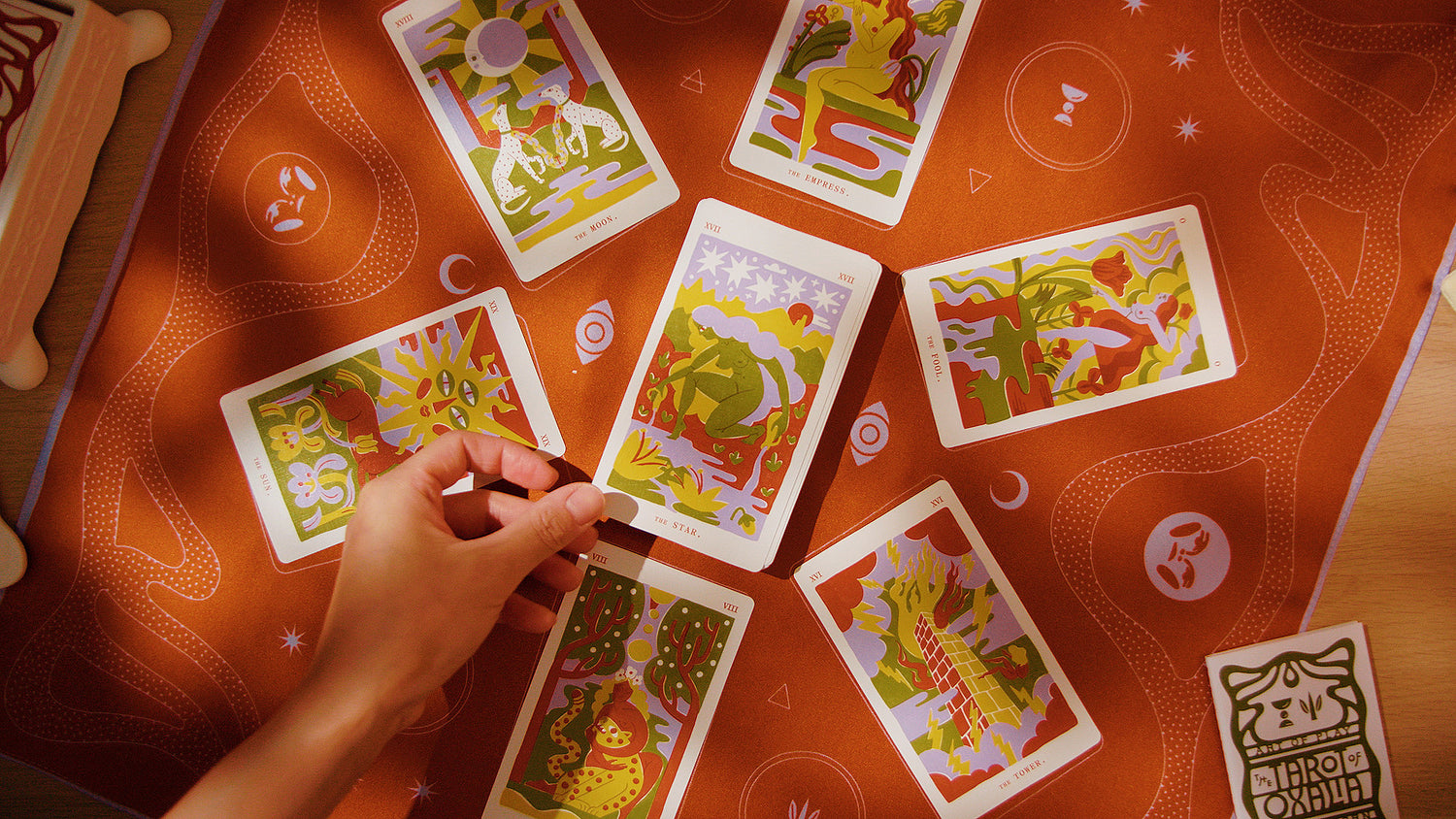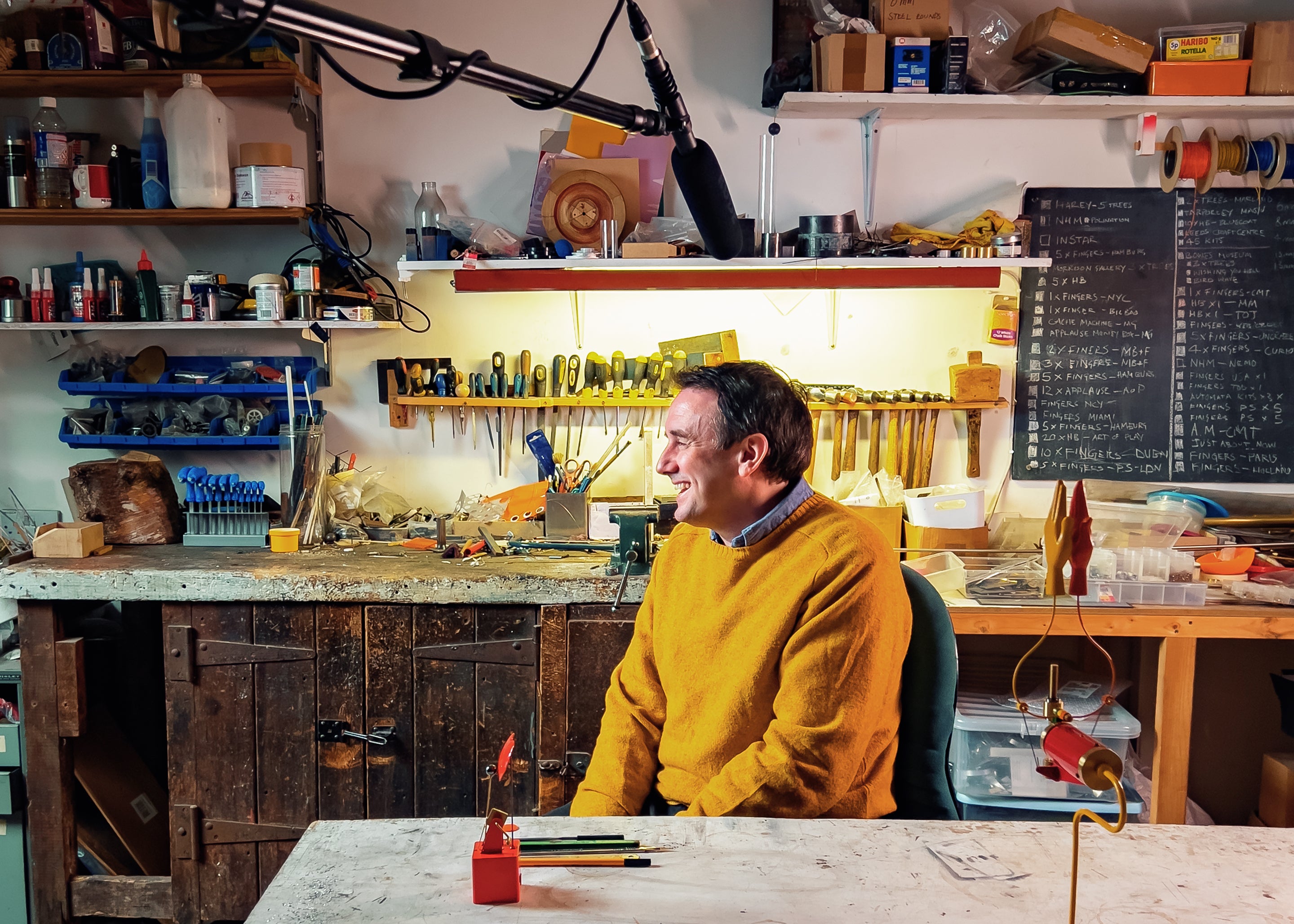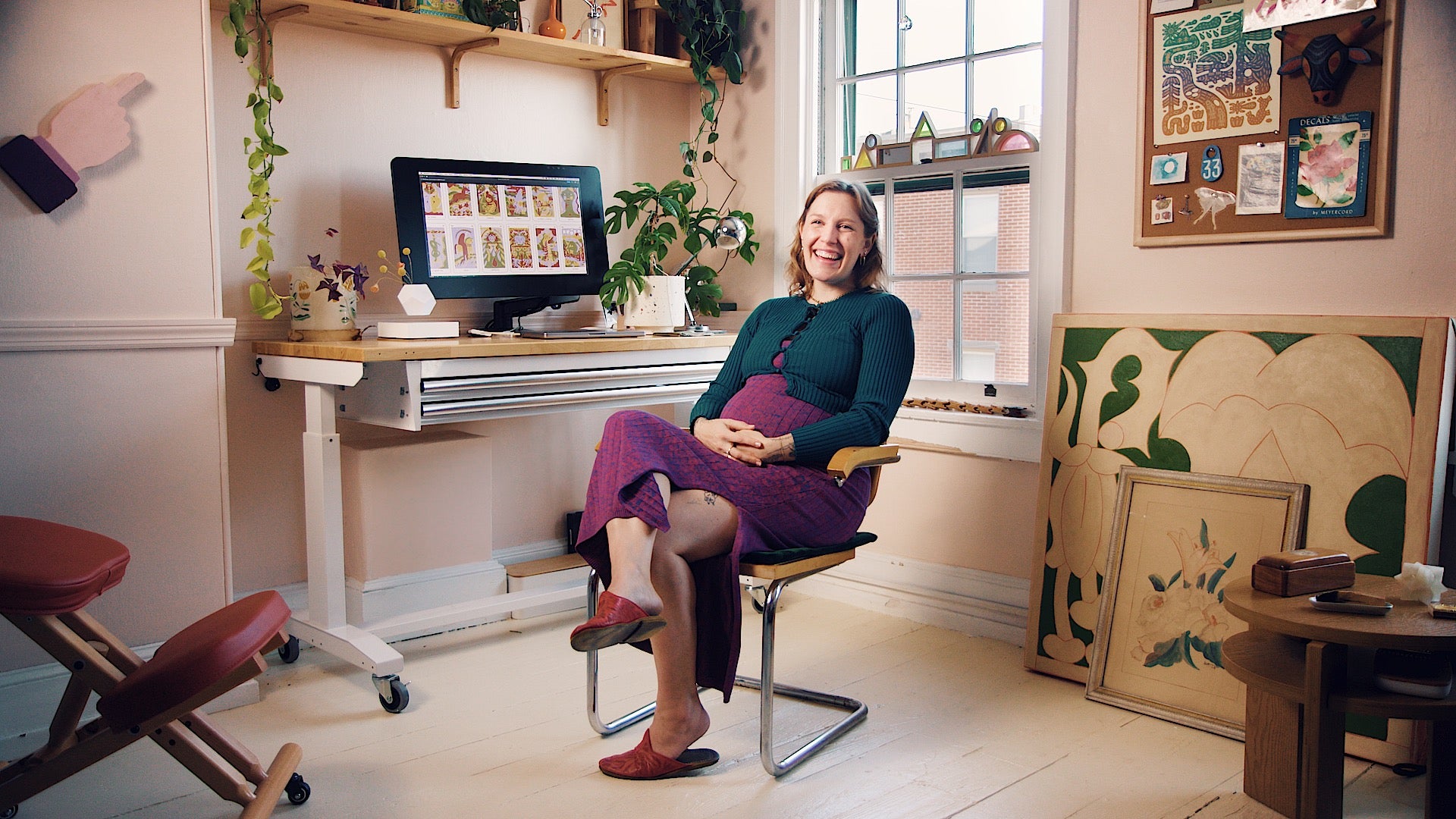Most people consider tarot cards as a tool of the psychic or otherwise esoterically gifted individual. The truth is, you don’t need to have the slightest magical bone in your body.
Tarot cards can be used by anyone so inclined. Believe it or not, everyone has a uniquely personal relationship with the Tarot. You can—and should—develop your own approach and relationship with tarot.
Tarot cards are more than just a divination tool—they’re like an air traffic controller for your life. The images depicted on the cards aren’t random. It is a systematic tool that methodically represents every concept and situation you could possibly find yourself in.
To learn how to read tarot cards, it’s important to understand the deck’s two Arcana.
Arcana is the plural form of arcanum, which comes from the Latin word arcanus. In Latin, arcanus means “secret” or “mystery.”
Every tarot deck (more or less, but especially the Rider-Waite and tarot decks based on it) has 78 cards divided as follows:
- Major Arcana (22 cards)
- Minor Arcana (56 cards)
The Major Arcana
The cards of the Major Arcana depict key themes, such as temperance, strength, judgment, and death.
Major Arcana cards indicate strong energy surrounding the theme illustrated. When you pull a Major Arcana card in a reading, it’s a hint that this area of your life needs assessment. Each card can also illustrate a life lesson:
- The Fool: Taking a leap of faith or trusting that the universe has your back
- The Emperor: Applying structured discipline
- The Hanged Man: Experiencing a delay that requires you to look at things differently
- The Tower: Needing to rebuild something after a major life shift
- The World: Feeling whole or accomplished
Another aspect of tarot readings is cards pulled in reverse or placed upside down. Not all tarot readers use reverse card interpretations. Reverse interpretations are not required, but incorporating the reverse meaning of cards pulled in your readings adds element of understanding.
The Minor Arcana
While the Major Arcana covers major life events and lessons, the Minor Arcana instead tackles life’s short-term circumstances.
Say you pull The Tower card in reverse, and your intuition tells you that, given its placement in the reading, obstacles are ahead. The Minor Arcana cards in the reading give you an idea of what those obstacles might be or how they may present in your life.
Some Minor Arcana themes include clarity, denial, prosperity, harmony, creativity, and stability.
Every card in the Major Arcana stands alone in its representation and meaning, while the Minor Arcana cards belong to suits (wands, cups, swords, pentacles), much like regular playing cards you’d use for Poker or Euchre.
There are also elements, which help with interpretations:
- Fire represents passion and inspiration, alignment, and taking action
- Water tells us about the intuitive nature of our emotions
- Air represents how we communicate and how our minds work
- Earth represents what we can hold, as well as our health and prosperity
Each suit of the Minor Arcana has 14 cards. As the cards increase from Ace to King, so, too, does the weight of their representations. For instance, the Ace of Swords upright signifies clarity or new ideas, while the King of Swords upright represents such grand ideas as truth, courage, and power of mind.
Modern-Day Tarot Practices
More than anything, a deck of tarot cards is the perfect self-discovery tool.
These cards mirror your internal, subconscious world, offering you a window into the wisdom of what makes you you! Being able to learn from the guiding power you ascribe to your tarot cards gives you the information you need to live life aligned with who you are. Your true self. The cards allow you to listen to your intuition rather than only the thoughts and ideas flowing from your intellectual nature.
For these reasons, many modern-day tarot readers use their cards to look within for answers and use these answers in conjunction with subtle life and attitude changes to work towards genuine healing.
As a solo practitioner, you can read the tarot to gain insights into your own life. Reading tarot cards can help you uncover blockages and answer your innermost questions, which, believe it or not, actually helps you heal and better prepares you for the day your special someone enters your peripheral.
So, how do you use tarot cards to look deep inside, discover what's holding you back, and unleash your creativity?
Using Tarot Cards For Introspection
In their book Wild Card: Let the Tarot Tell Your Story, Jen Cownie and Fiona Lensvelt write: “At its heart, the Tarot is a storytelling device, a deck of symbols and narratives that can spark conversations, inspire ideas, and reveal new perspectives. And you don’t need to be psychic to use it: it is a practice that is open to everyone.”
Because tarot cards, especially the Major Arcana, deal with archetypes, conditions, events, and feelings that everyone is familiar with, reading tarot can help you reach deep inside to find your true feelings in situations you face.
To achieve the best reading possible—a reading not clouded by your ego or emotions—it’s important to only conduct readings when you’re in a neutral and comfortable state of mind. Otherwise, a reading can be less accurate because our minds aren’t as open to other perspectives when our emotions are high.
To begin a tarot reading for introspection, ground yourself first. How? By doing anything that brings you to your center. Some ideas include:
- Going for a walk through nature
- Hugging a tree (yes, really!)
- Walking barefoot through grass
When you feel relaxed and ready, breathe in deeply and exhale slowly a few times. Then, create a space in which you’ll conduct the reading. It can be any space you choose, but it’s best when the space is one that you reserve for tarot card readings and nothing else. Doing so means your mind won’t be jarred thinking of other things in that space.
Cards Designed For Intention and Story
What is most important in this portion of your ritual is that you focus on your intention. Once you’re calm, your intention’s been set, and you’re ready to receive answers, begin shuffling. Choose only a few cards so the reading focuses on your question or concern. Card illustrations offer insights into your own feelings.
Additionally, it offers insights into the feelings, thoughts, and ideas of those around you who may be a part of the situation or simply know about it.
In a sense, it’s really a lot like role-playing: As you pull cards, you project yourself or someone you know into the image found on each card. And 78 (more or less, depending on your deck) cards offer 78 different perspectives for any question or concern you might have.
So, pick up a deck with a design that speaks to you (we recommend Kelly Thorn’s Greek, sci-fi-inspired Tarot of Oxalia), shuffle up, and interpret the story you see on the table!
Popular Tarot Decks
The Rider-Waite Tarot card deck is perhaps the most famous of all decks, but it has since inspired the creation of many other decks—some are reinterpretations of the Rider-Waite deck, while others have their own unique take on divination, like oracle cards.
Popular tarot decks include:
- Rider-Waite Tarot
- The Wild Unknown Tarot
- Pagan Otherworlds Tarot
- The Modern Witch Tarot
- The Illuminated Tarot
- The Dali Tarot
Popular oracle decks include:
- The Solitary Witch Oracle
- Elfin Quest
- The Cosmos Oracle
About the Rider-Waite Tarot Deck
This is the tarot deck that most often comes to mind when talking about the Tarot. The deck is named after:
Rider Company. In 1909, the Rider Company published the cards and accompanying book.
A. E. Waite, an academic and spiritualist, created the deck's instructions and the meanings each card represents.
Though her name is not always included when referencing the Rider-Waite Tarot, Pamela Colman Smith is the artist responsible for the cards' infamous illustrations. Smith and Waite both belonged to an ancient society known as the Hermetic Order of the Golden Dawn, known for its occultic and mystical heritage. The society was founded by three men, all of whom were Freemasons and Rosicrucians. The Rider-Waite Tarot is the tarot deck to which all other tarot decks are compared.
Written by Jennifer Cameron





Leave a comment
This site is protected by hCaptcha and the hCaptcha Privacy Policy and Terms of Service apply.